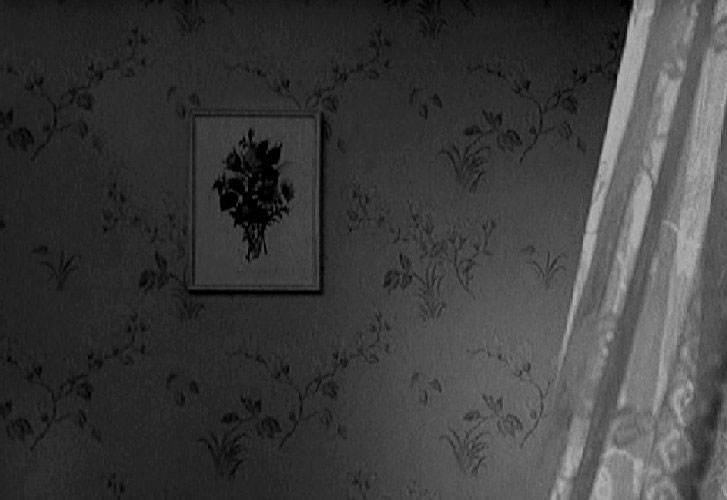
As she goes to the window, comes back, takes the frame, the image, that he looks at behind her or looks at her who, with her hand, sets down another photo taken, composes by frames, tactile pass, does it again two times at least, of an object that she picks up, or of a hand she grazes, closes a book, of one finger in the dust, the cover bound, indicates a bed, approaches and lies down, he approaches and sits, on the edge looks at her, a kiss she avoids, gets up again, turns again towards, doesn’t look, turns at the sound of a door being opened or a door being shut or footsteps is a shadow, a still life of flowers on the wall, a curtain that the wind ruffles, folding back as she enters and turns off the radio as he, in an armchair, shuts his eyes, falls asleep, that she takes her things and leaves quietly. It is still a natural movement, the wind still provokes it, is opposed to the mechanism and the flowers, third time, are a hidden motif. As a woman, in the street, steps onto the sidewalk, he grabs the arm of another woman who was passing on the side without noticing her, stops her, examines her, notices that she has dyed her hair, has changed from blond to brunette, so then he sends her away, dismisses her, watches her leaves with a big grin. It is a series of substitutions, a permanent passing from black to white, a suite of losses, of lost time, spent, time in the same, the identical, the similar through changes without end of a brunette to a blond or a brunette or a dark man to another to another. As he gets into his car, starts the motor, the night is dark, the halos street lamps, he stops, advances toward the gate, leans on it, click, takes off for another gate, throws gravel, click, that a blond woman gets out, advances, opens the gate, turns back to see, isn’t her. It is a permanent reprise with variations, identical gestures to interpret differently, according to context, permanent echoes, loops of little sounds that come back insistently: door, poles, gravel or typewriter. (Translated by Carrie Noland)